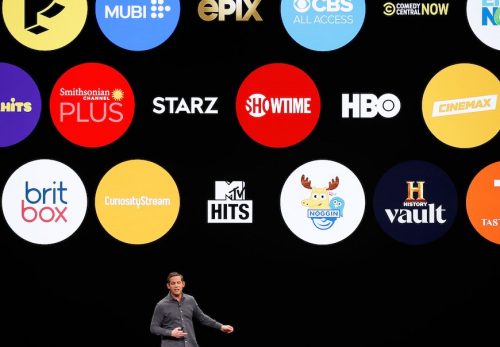By Mark Pattison | Catholic News Service
WASHINGTON (CNS) — I can remember Bruce Springsteen singing a song he wrote some 30 years ago called “57 Channels (And Nothin’ On).” The sentiment may be the same, but the number today seems quaint.
Springsteen was talking about the brain-dulling numbness of cable TV. By the time the 1990s were over, TV trendy types were prophesying about the 500-channel universe, thanks to satellite.
In this age, we have streaming options as well, thanks to increased computer capacity and infrastructure. But what option really suits the would-be viewer best?
In TV’s early days, there was solely the VHF option, channels 2 through 13. By the time the 1960s rolled around, the Federal Communications Commission opened up the UHF bandwidth, creating space for independent, non-network-affiliated channels.
But that wasn’t enough. People were living in concrete canyons like New York City, where reception was awful. Others were living in mountainous regions, or natural canyons, also stymied by bad reception. Enter cable TV. Cable had the capacity to provide not only clear and consistent picture quality regardless of location or weather, but additional channels intended solely for the cable-outfitted home.

Cable franchises offered tiers of programming choices to keep customers happy, and from paying more than they wanted. Some pay-cable channels, like HBO and Showtime, were premium add-ons.
Before the end of the century, even that was not enough. That brings us to satellite TV, where for those willing to pony up the dough, customers could get customized packages of sports, both the West Coast and East Coast feeds of certain channels — I don’t call them “networks” since the only thing local about them is some advertising — and an even bigger range of choices.
For some reason, viewers still weren’t satisfied. Netflix, which got its start delivering DVDs by mail to subscribers’ homes, leapt into the content-producing business and shifted to an online model. It also bought the streaming rights to gobs of TV series — both domestic (umpteen seasons of “Grey’s Anatomy”) and foreign (188 episodes of “Murdoch Mysteries,” a Canadian series about a Toronto police detective in the 1890s).
Now streaming services are growing like Topsy. Think of streaming like going to the library and borrowing a book. But you’re not borrowing; you’re paying a fee each month to borrow as many books as you want. Except that there are an unlimited number of copies of everything you want to borrow.
So what is best? With cable, there’s been a lot of cord-cutting. Subscribers had sought a la carte cable to pay only for what they want. But cable franchises have been resistant to offer that option, and they’ve paid the price exacted by cord-cutters. They have, though, modified the “basic” tier of cable channels. But studies have shown that a viewer will choose from about 17 channels to watch, even if only a little bit.
Satellite TV offers hundreds of channels, but you’ve got to be willing to shell out some more dough. They hold allure to the genre-specific viewer. Want to watch sports? Pro and college sports packages are plentiful. Want to watch a channel so specific your cable operator will likely never carry it? Then satellite may be your answer.
Streaming can be cheaper than either cable or satellite, but relatively few people subscribe to just one streaming service. You’d rather binge-watch an entire series? Streaming may be the choice — but if you want to watch all 200 episodes of a certain show, you may be so impatient to get to the grand finale you grow agitated waiting for that last episode rather than truly enjoying the one on your screen.
To this point, there’s been no mention of DVDs and Blu-ray discs. Rental shops like Blockbuster have gone the way of the dodo. Nothing stops you from buying these discs. But after you’ve bought them, and presumably watched them, then you’ve got to store them. And people keep griping to themselves they’ve got too much stuff, but they rarely get around to decluttering, because griping is easier and faster.
By the way, this argument also can be applied to CDs vs. audio streaming services, and books vs. e-readers such as Kindle and Nook.
Which brings us back to over-the-air TV, which begat decades of alternatives to it. In the multicast universe, where a digital over-the-air signal can be split multiple ways, it’s like having basic cable for only the one-time cost of set-top box.
It’s true that creative types are trying to get censors to permit more sketchy language and depictions, but all over-the-air content is still at least nominally regulated by the FCC.
And if you don’t like the commercials, your clicker can help you find from among dozens of channels at least one that’s not playing an at the same time. Or you can press the “mute” button.
Despite the explosive range of choices, after all, you’ve still got just one set of eyes.






















